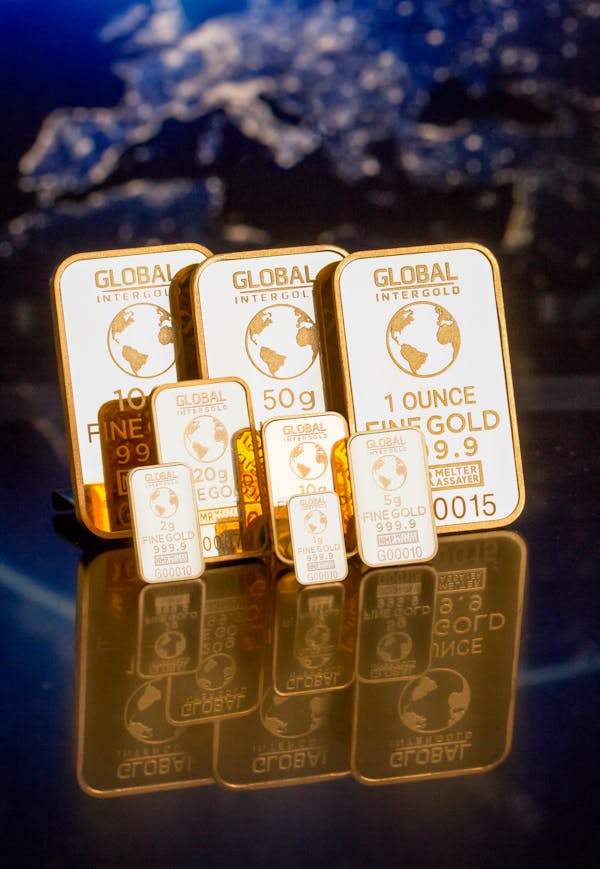Whether you’re seeking to diversify your portfolio with a tangible asset, hedge against inflation or simply own a piece of history, there are many considerations when investing in gold. Connect with a Financial Advisor to learn how adding gold to your portfolio could align with your goals.
Buying and selling physical gold requires careful research to avoid dealing with dishonest dealers or paying excessive fees. Typically, gold dealers charge more than the market price of the metal in a form called a spread.
Stability
Gold is often considered a safe-haven asset that has historically maintained its value and can provide protection in times of economic uncertainty or recession. It is also seen as a hedge against inflation and loss of purchasing power in paper currencies.
Physical gold has a low correlation to stocks and bonds, which makes it an attractive addition to your portfolio. Depending on your investment objectives, you can choose to invest in physical gold in the form of coins, bullion or jewelry, or via an exchange-traded fund (ETF) or share in a company that mines gold.
ETFs and gold-mining companies can be more volatile than traditional investments, as they can be affected by broader market trends. This can make them less appealing to some investors. In addition, buying shares in a company means that you are investing in a business rather than the physical metal. In contrast, owning physical gold gives you greater control over your assets, but requires secure storage and management.
Diversification
The inclusion of gold in investment portfolios can enhance diversification and reduce risk. This is because gold typically exhibits low or negative correlations with other asset classes such as stocks and bonds, allowing it to provide a buffer during periods of market volatility. In addition, gold and silver are often considered safe-haven assets, which attract investors seeking stability amidst geopolitical or economic turmoil.

Investors can choose to buy physical gold in the form of coins or bars, invest in exchange-traded funds (ETFs), or purchase gold mining stocks. However, these options come with varying risks and costs. For example, purchasing physical gold can be expensive and requires storage expenses, while investing in ETFs and mining stocks may entail additional management fees.
Adding gold to a simple portfolio split 60:40 between stocks and bonds can significantly improve risk-adjusted returns during periods of weakness. The table below shows how a portfolio containing gold has performed relative to an all-equities and bond portfolio over the last four decades.
Safety
Gold has become one of the world’s leading investment safe haven assets. The metal’s price tends to increase during times of economic turmoil and geopolitical conflict. It is also considered a better hedge against inflation than stocks and bonds.
Physical gold investments carry a number of costs, including transportation, insurance, storage and maintenance fees. The risk of theft and damage are significant, so most investors choose to store their bullion at a vault service rather than at home. These expenses reduce the overall return on the investment.
Depending on your investing goals, you may opt for a traditional or Roth gold IRA, which allow you to invest on a tax-deferred basis over time. Alternatively, you can buy gold ETFs or mutual funds that track the price of the metal on a commodities exchange. Gold ETFs and mutual funds have lower fees than physical investments. They do, however, not offer the same diversification benefits as owning the actual metal.
Taxes
When you sell gold investments, you will be taxed at capital gains rates based on your income bracket. However, there are ways to lower your tax liability when you invest in gold. First, it’s important to diversify your investment portfolio and not invest all of your money into one type of metal. Also, make sure to avoid paying high fees and costs for storage and physical delivery.
Paper gold investments are a popular option for investors who want to limit their tax liabilities. These include gold mutual funds and ETFs. These are usually based on the price of gold and related mining companies. Unlike physical gold, these investments have lower expenses.
Another advantage of paper gold is that it doesn’t incur VAT, which is a major cost for some investors. Also, if you sell inherited or pre-owned gold, you may qualify for exemptions from capital gains taxes. You can also use capital losses from other investments to offset your tax liability.